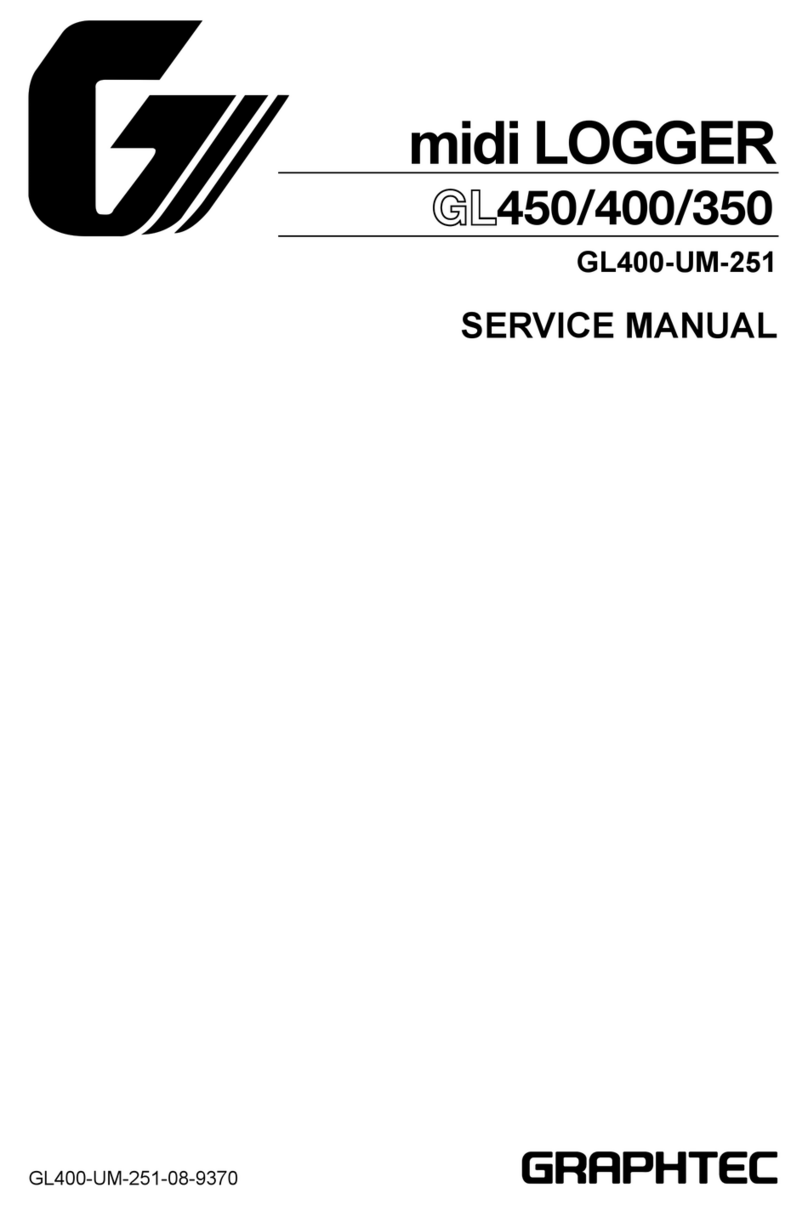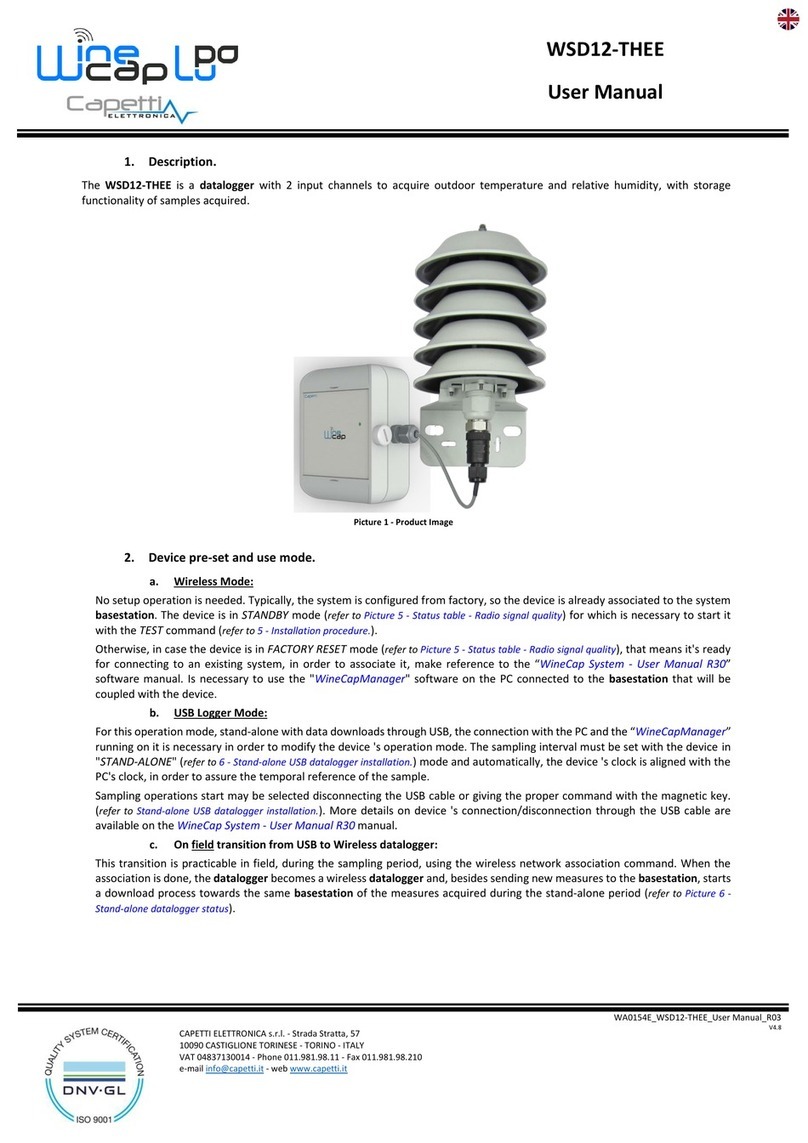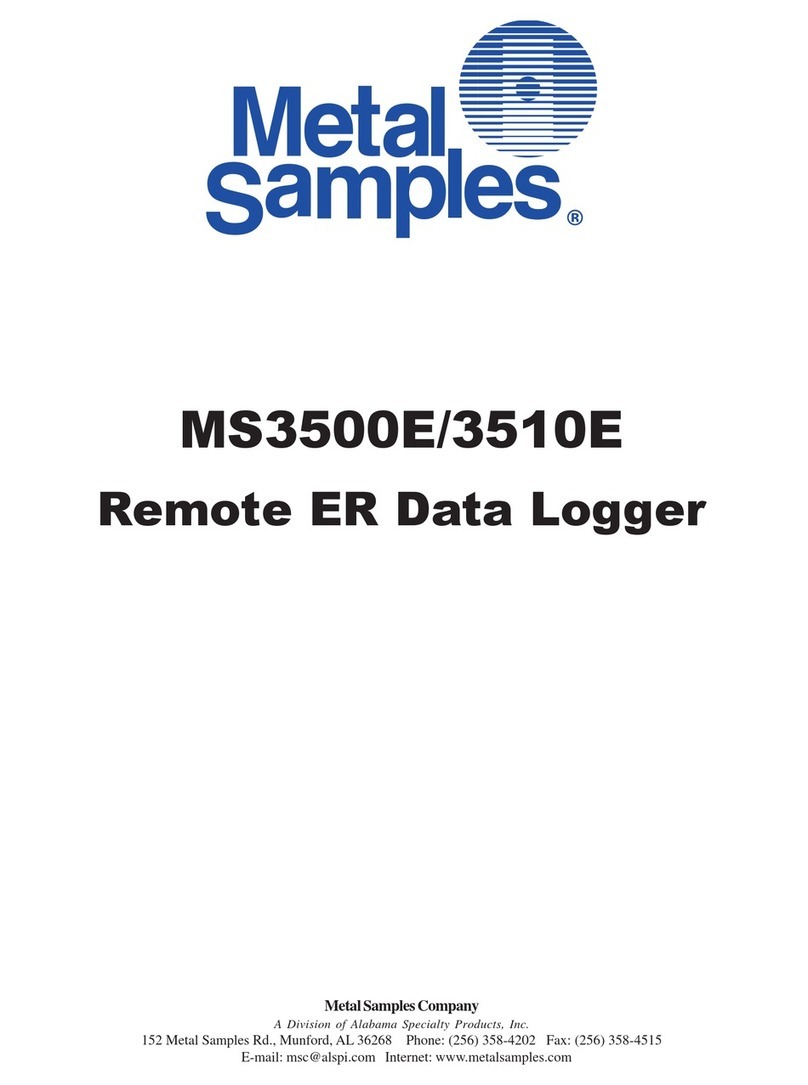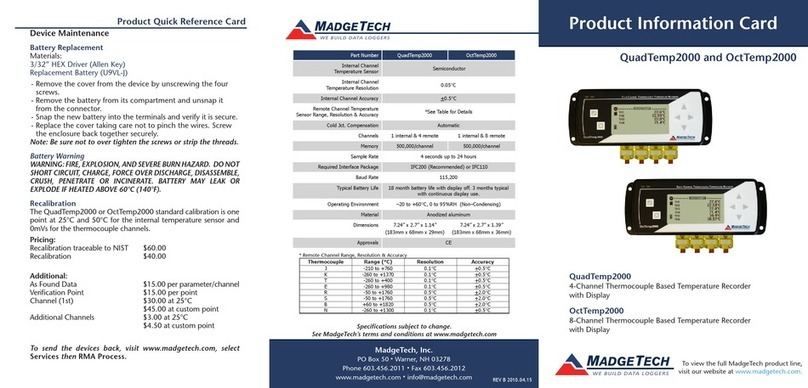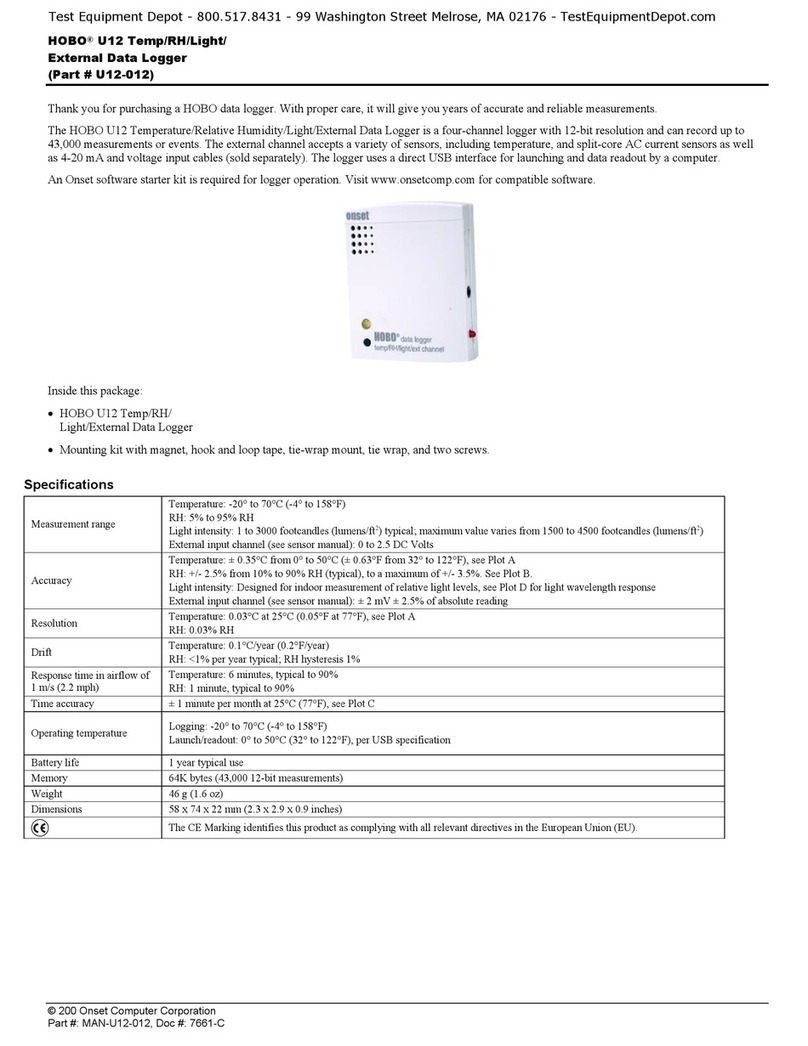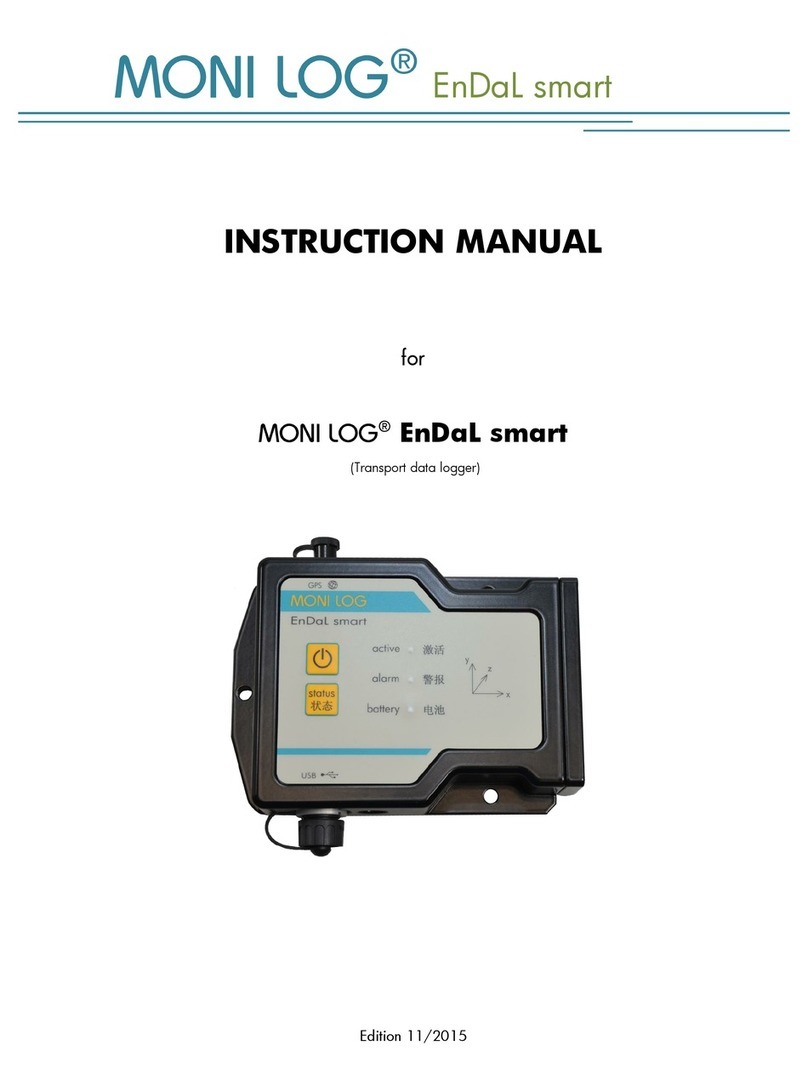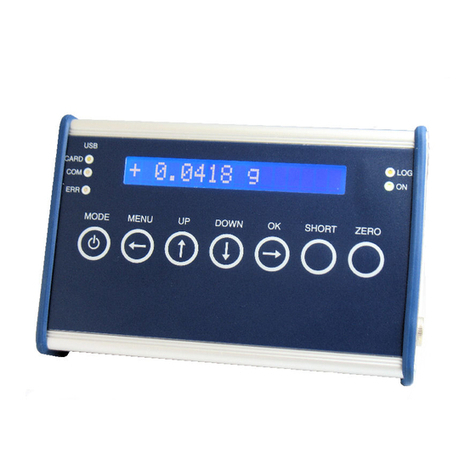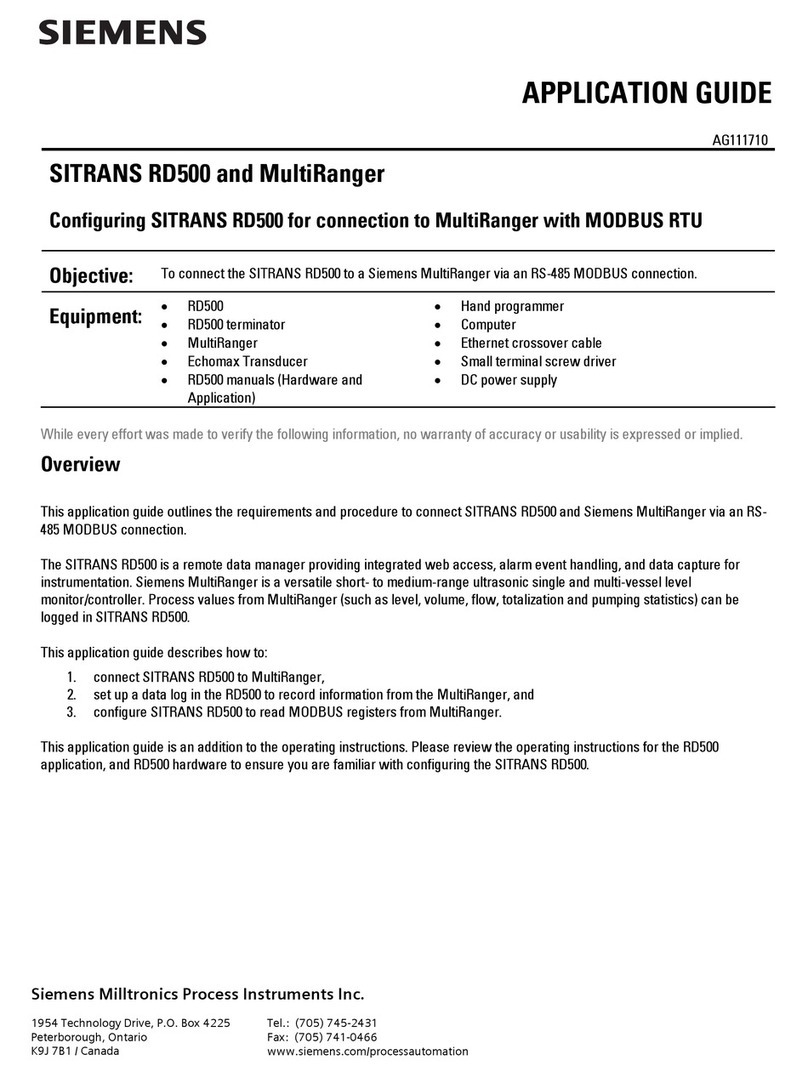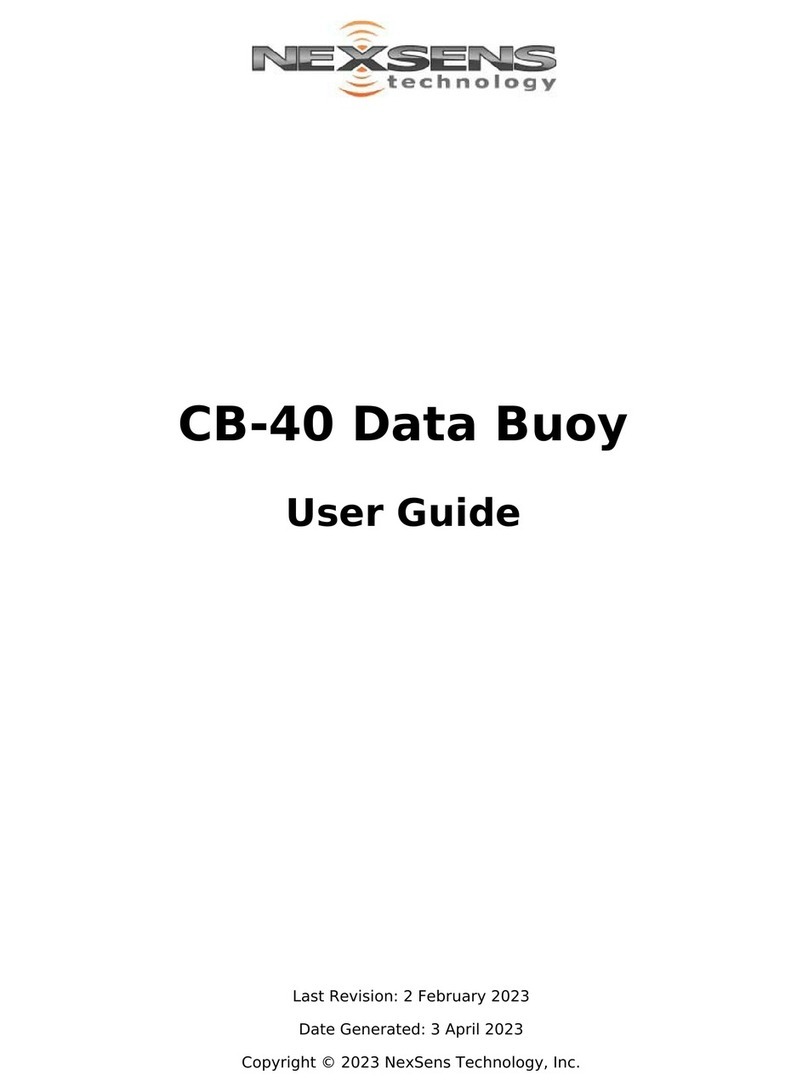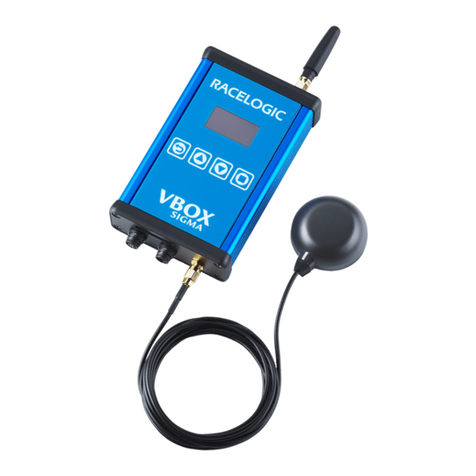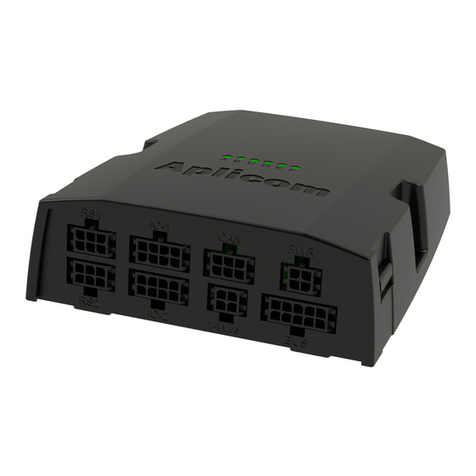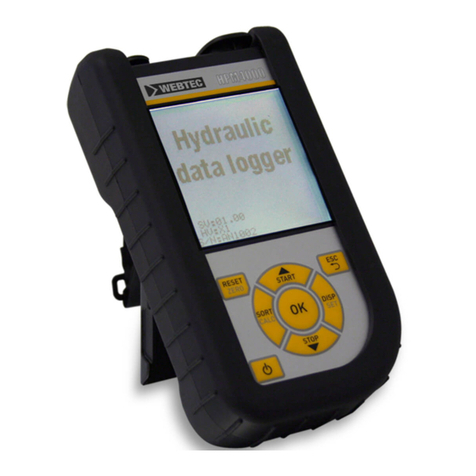Acoustic Research Ngara User manual

Ngara
User Manual
25-7cd7566

Ngara
User Manual
Revision History
Revision Date Author(s) Description
7cd7566 2019-02-18 Juan Aguero Add Noise Cloud owchart
d0547e7 2018-12-05 Juan Aguero Update for V12.2 operation
f071bc2 2018-09-14 Juan Aguero Add missing section label
d4141bf 2018-09-14 Juan Aguero Add new warning screens
c9a308b 2018-09-12 Juan Aguero As released for V12.1 rmware
8d68c33 2018-09-07 Juan Aguero Update reference specications
f0185aa 2018-09-07 Juan Aguero Update remote host operation
301deda 2018-09-06 Juan Aguero Add Noise Cloud and Email sections
1b99182 2018-09-05 Juan Aguero Move specications to end of manual
d73e30a 2018-09-04 Juan Aguero Update Nosie Cloud image
296b171 2018-09-04 Juan Aguero Update for V12.1 rmware
834b25f 2018-04-18 Juan Aguero Move images to images folder
d3798ae 2018-03-05 Juan Aguero Add application history
15aafc7 2018-03-05 Juan Aguero Merge branch ’master’ of git.lab:ngara/logger.wiki
2117605 2018-03-05 Juan Aguero Update to format and spelling
4cb3b86 2018-03-05 Juan Aguero Add header information
fbfc9db 2018-03-05 Juan Aguero Update Manual
1530610 2018-03-05 lucky jaiswal Update Manual Issue 35
e8089b5 2017-12-12 Juan Aguero Add temperature calibration information
25bc0c9 2017-12-11 Aaron Skeates-Udy Update manual factory default time weighting fast.
10aa48c 2017-12-11 Aaron Skeates-Udy Update manual factory default options.
5e93bd0 2017-11-07 Juan Aguero Move to general root directory structure
9cebcfa 2017-06-20 Juan Aguero added local operation page
c71de3a 2017-06-20 Juan Aguero added general description page
6efa461 2017-06-20 Juan Aguero adding user manual to wiki
Version — 25-7cd7566 Page — 2 of 80

Ngara
User Manual
Table of Contents
1 Introduction 8
1.1 Overview.................................................. 8
2 General Description 9
2.1 WeatherProofCase............................................ 9
2.2 12VDCBattery.............................................. 9
2.3 Ngara ................................................... 9
2.3.1 EnclosureBack .......................................... 10
2.3.2 EnclosureFront .......................................... 10
2.3.3 EnclosureTop........................................... 11
2.4 Microphone ................................................ 11
2.4.1 MountingOptions......................................... 11
3 Functions 13
3.1 StandaloneLogger............................................. 13
3.1.1 StorageHandling ......................................... 13
3.1.2 StoragePower........................................... 13
3.1.3 SessionDirectory ......................................... 14
3.1.4 DataUsage ............................................ 16
3.2 NoiseCloud ................................................ 17
3.2.1 Communication .......................................... 17
3.2.2 ModemPower........................................... 17
3.2.3 OperationSettings ........................................ 18
3.2.4 DataUsage ............................................ 18
3.2.5 Troubleshooting.......................................... 18
3.3 Email.................................................... 20
3.3.1 Communication .......................................... 20
3.3.2 PowerSaving ........................................... 20
3.3.3 Format............................................... 20
3.4 IndustrialNoiseMonitor.......................................... 21
3.4.1 AdditionalData .......................................... 21
3.4.2 DataUsage ............................................ 22
Version — 25-7cd7566 Page — 3 of 80

Ngara
User Manual
4 Local Operation 23
4.1 AvailableUserInterface.......................................... 23
4.2 PoweringtheUnit............................................. 23
4.3 MenuStructure .............................................. 23
4.4 Conguration Menu Item (Menu 1) . . . . . . . . . . . . . . . . . . . . . . . . . . . . . . . . . . . . 23
4.4.1 IdleTimeout............................................ 24
4.4.2 AncillariesTimeout ........................................ 24
4.4.3 Network .............................................. 24
4.4.4 TimeandDate .......................................... 27
4.4.5 SystemCalibration ........................................ 27
4.4.6 TemperatureCalibration ..................................... 28
4.4.7 USBPower ............................................ 28
4.4.8 KeepAlive............................................. 29
4.4.9 FactoryDefault .......................................... 29
4.4.10 Exit ................................................ 30
4.5 LoggingMenuItem(Menu2)....................................... 30
4.5.1 StartSession............................................ 30
4.5.2 StopSession............................................ 31
4.5.3 TakeRef.............................................. 31
4.5.4 ChangeDisk ........................................... 32
4.5.5 WAVSetup ............................................ 32
4.5.6 TimeWeightingSetup ...................................... 32
4.5.7 TriggerSetup ........................................... 33
4.5.8 BandPassSetup ......................................... 33
4.5.9 FlushLogs............................................. 34
4.5.10 Exit ................................................ 34
4.6 StatusMenuItem(Menu3) ....................................... 34
4.6.1 ShowStatus............................................ 35
4.6.2 LiveSPL.............................................. 35
4.6.3 MaxSPL.............................................. 35
4.6.4 Short Leq .............................................. 35
4.6.5 Long Leq .............................................. 36
Version — 25-7cd7566 Page — 4 of 80

Ngara
User Manual
4.6.6 RMSDetection .......................................... 36
4.6.7 FilteredSPL............................................ 36
4.6.8 Exit ................................................ 36
4.7 DiskMenuItem(Menu4) ........................................ 37
4.7.1 DiskStatus ............................................ 37
4.7.2 ListSessions............................................ 37
4.7.3 DiskSize.............................................. 37
4.7.4 DiskFree ............................................. 37
4.7.5 FormatDisk............................................ 38
4.7.6 Exit ................................................ 38
4.8 NoiseCloudMenuItem(Menu5) .................................... 38
4.8.1 Start................................................ 38
4.8.2 Stop ................................................ 38
4.8.3 Percentiles............................................. 39
4.8.4 UploadPeriod........................................... 39
4.8.5 Exit ................................................ 40
4.9 StatusandIdleScreen........................................... 40
5 Remote Operation 42
5.1 InstallationofHostSoftware ....................................... 42
5.2 MainScreen................................................ 43
5.3 Linkingtoalogger ............................................ 43
5.3.1 TheResultGroup......................................... 44
5.3.2 TheStatusGroup......................................... 44
5.3.3 The General Information Group . . . . . . . . . . . . . . . . . . . . . . . . . . . . . . . . . . 44
5.4 ChangingLoggerConguration...................................... 45
5.4.1 General Logger Conguration Tab . . . . . . . . . . . . . . . . . . . . . . . . . . . . . . . . 45
5.4.2 WaveFileCongurationTab ................................... 46
5.4.3 TriggerCongurationTab..................................... 46
5.4.4 AlarmClockTab ......................................... 54
5.4.5 AUXOutputTab ......................................... 54
5.4.6 UDPOutputTab ......................................... 55
5.4.7 Advanced Conguration Options . . . . . . . . . . . . . . . . . . . . . . . . . . . . . . . . . 56
Version — 25-7cd7566 Page — 5 of 80

Ngara
User Manual
5.4.8 NoiseCloudConguration .................................... 57
5.4.9 EmailTab ............................................. 57
5.5 LoggerTime................................................ 58
5.6 SystemCalibration............................................. 59
5.7 LoggerReboot............................................... 60
5.8 LoggerShutdown ............................................. 60
5.9 LoggerControl............................................... 61
5.9.1 StartingSession.......................................... 61
5.9.2 StoppingaSession ........................................ 62
5.9.3 TakingaReferenceLevel ..................................... 62
5.9.4 ChangingDisk........................................... 63
5.10DiskOperations .............................................. 64
5.10.1 DetailStorageMediaView .................................... 64
5.10.2 DownloadingsessionData .................................... 65
5.10.3 Remotely Formatting a USB Drive . . . . . . . . . . . . . . . . . . . . . . . . . . . . . . . . 66
5.10.4 Performing Statistical Analysis . . . . . . . . . . . . . . . . . . . . . . . . . . . . . . . . . . 66
5.10.5 Re-constitution of wave le data . . . . . . . . . . . . . . . . . . . . . . . . . . . . . . . . . 67
5.10.6 ReformattingaUSBDevice.................................... 68
6 Network Conguration Options 69
6.1 Communication .............................................. 69
6.2 ConnectiontoPC ............................................. 69
6.3 ConnectiontoaNetwork ......................................... 70
6.4 Connectionto3G/4G ........................................... 70
7 Reference Specications 72
7.1 ApplicableStandards ........................................... 72
7.2 AcousticReferenceConditions ...................................... 72
7.3 Environmental Reference Conditions . . . . . . . . . . . . . . . . . . . . . . . . . . . . . . . . . . . 72
7.4 Adjustments to Indicated Levels . . . . . . . . . . . . . . . . . . . . . . . . . . . . . . . . . . . . . 72
7.5 ExtremeInputs .............................................. 73
7.6 Nominal A-Weighted Sound Levels . . . . . . . . . . . . . . . . . . . . . . . . . . . . . . . . . . . . 73
7.7 Microphone ................................................ 73
Version — 25-7cd7566 Page — 6 of 80

Ngara
User Manual
7.7.1 FrequencyResponse........................................ 73
7.7.2 DirectionalResponse ....................................... 74
7.7.3 ThermalCharacteristics...................................... 74
7.7.4 HumidityCharacteristics ..................................... 75
7.7.5 Reduction of Wind Noise by Windscreen . . . . . . . . . . . . . . . . . . . . . . . . . . . . . 75
7.7.6 Specications ........................................... 76
7.8 FilterResponses.............................................. 76
8 Application Change Log 80
Version — 25-7cd7566 Page — 7 of 80

Ngara
User Manual
1 Introduction
This document provides a description of the functions provided by the Ngara logger platform. All displays, user tools,
facilities and capabilities are described herein.
1.1 Overview
The Ngara Sound Acquisition System oers full measurement exibility, simultaneously producing the following
acoustic measurements –
• Fast or Slow SPL-A
• Fast or Slow SPL-C
• Leq-A
• Leq-C
In addition to the above measurements the Ngara platform is able to store raw audio data to a USB storage device,
capable of post processing the majority of your acoustic needs. All of this is achieved in a low power 12-volt
environment.
Simple control and conguration of Ngara can be accomplished through the on-board Liquid Crystal display (LCD)
and push-button interface. More advanced control functions are made available through the remote host software.
This may include:
• Alarm Control
• Triggering Conguration
• Auxiliary Output Conguration
• Email Alerts
• Noise Cloud Interface
The logged data is saved as a formatted list of Sound Pressure Level measurements in a Comma Separated Variable
(CSV) le. Samples are stored at 100ms intervals. The data gathered is capable of being post processed to produce
any required statistical representation of the data obtained.
Both CSV le data and audio data are split into 1-hour long les. A new le is created every hour, on the hour, with
each logging session stored into separate directories.
Version — 25-7cd7566 Page — 8 of 80

Ngara
User Manual
2 General Description
Ngara is a Class 1 instrument (IEC 61672.3:2006), consisting of the following components –
• Weather proof case
• 12V DC Battery
• Ngara Instrument
• Microphone & Pre-Amplier
2.1 Weather Proof Case
Ngara is housed in a rugged weatherproof case. To open the case, unclip the two latches at the front of the case.
When closing the weatherproof case, ensure the microphone lead is carefully guided through the cut out provided.
To attach the microphone post, simply screw the base of the post into the mounting found on the lid. On the outside
of each latch, a reinforced hole is provided to allow for security measures such as padlocks and chains.
Failure to carefully guide the cable through the cut out provided will cause irreparable internal damage
to the microphone cable.
2.2 12V DC Battery
Ngara can be congured to operate using two dierent sized batteries. The congurable battery sizes include –
•24Ahr – Allows for up to a maximum of 2 weeks of continual CSV data only logging, and up to 1 week worth
of CSV and WAV le data recording.
•12Ahr – Allows for up to a maximum of 1 week of continual CSV data only logging
The above gures are a guide only and assume -
• The use of a fully charged battery
• There is enough available disk space
Current battery status can be viewed using the LCD or the Remote Host application.
Battery discharge rate is not linear. Battery voltage will drop faster as the stored capacity decreases.
2.3 Ngara
The electronics can be housed within either a Silver (V1) or Black (V2) aluminium enclosure. The unit is classied
as per Group X for susceptibility to radio frequency elds and has been tested to AS/NZS CISPR 22, and is approved
for connection to any network.
There are no user serviceable parts inside the enclosure.
The electronic circuitry contains many calibration settings that are essential for Ngara to operate correctly.
Opening the enclosure will void the unit’s calibration and warranty.
Version — 25-7cd7566 Page — 9 of 80

Ngara
User Manual
2.3.1 Enclosure Back
The back of the enclosure contains the following connections –
• Aux connector (4-pin)
• Ethernet communications port (RJ-45)
This port can be used to connect to a Local Area Network (LAN) to provide a communications link to Ngara
• USB ports (2x USB ports)
The USB ports allow the connection of a single storage device
• 12V Output Connector
Provided as standard on Ngara Black systems
Data will be lost if the storage device is removed during a logging session.
Please refer to Section 4.5.4 for details on ensuring there is no data loss.
Figure 1: Back Enclosure
2.3.2 Enclosure Front
The front of the enclosure is provided with the following connector –
• Microphone Connector
Inserting the plug and screwing it in until rm connects the microphone lead to Ngara
Figure 2: Front Enclosure
Over tightening can lead to internal board damage
Version — 25-7cd7566 Page — 10 of 80

Ngara
User Manual
2.3.3 Enclosure Top
The top of the enclosure houses the local user interface. The local user interface consist of the following items –
• A Liquid Crystal Display (LCD)
• A WAKE-UP push-button
Used to control the power to peripheral devices
• A SELECT push-button
Used to scroll through menu items
• An ENTER push-button
Used to select menu items
Refer to Section 4 for details on the local interface provided.
Figure 3: Top Enclosure
2.4 Microphone
Ngara uses a UC-53A Rion microphone attached to a NH-17 with 5 metre cable, preamplier.
These components comply with the specications of AS 1259 and IEC 61672 and as such are highly sensitive. Whilst
they have some resistance to environmental eects, care should be taken when the microphone is to be exposed to
rain and other extremes in weather. Wind and rain shields are available as an option for Ngara.
Detailed microphone specications can be found on Section 7.7.
2.4.1 Mounting Options
To achieve compliance with the stated standards the supplied UC-53A microphone and NH-17 preamplier must be
mounted to the end of the supplied microphone post.
Version — 25-7cd7566 Page — 11 of 80

Ngara
User Manual
To make these posts easy to set up and pull apart, we recommend dipping the post screws in a lubricant, such as
Vaseline. This makes the posts easier to screw into each other and it also stops them from becoming stuck after
being left in the eld for a few days.
Version — 25-7cd7566 Page — 12 of 80

Ngara
User Manual
3 Functions
The following sections describe the general operating functions of a Ngara real time sound acquisition system.
3.1 Standalone Logger
When operating as a standalone logger, Ngara will store all logging data to an external USB storage device.
To start a USB session, simply select start session using the on-board interface (Section 4.5.1) or the Remote Host
application (Section 5.9.1).
During the course of the recording session, any number of reference levels can be recorded. Simply follow the
instruction for the on-board interface (Section 4.5.3) or the Remote Host application (Section 5.9.3).
Once completed, the USB session may be stopped through the on-board interface (Section 4.5.2) or the Remote
Host application (Section 5.9.2). This will cause the data within the internal buer to be moved to the USB storage
device (described as flushing). The session is only complete once this nal write has completed, do not remove
power to the unit before hand.
3.1.1 Storage Handling
All USB storage devices must be formatted by Ngara. This ensures both, a small format information le is written at
the root of the drive as well as circumventing the Windows imposed FAT32 le system allocation size limit of 32GB.
The internal format information le (fmtinfo.rec) is a small record of sessions found and drive speed parameters.
The stored session record is required to ensure fragmentation of the le system does not occur. To increase disk
performance, Ngara will not allow the use of a disk which has had sessions deleted.
It is recommended not to delete sessions from drives, but rather format the drive using Ngara or the Remote Host
software. Details on how to format a USB drive using the on-board interface can be found in Section 4.7.5, and
using the Remote Host interface can be found in Section 5.10.3.
There is no longer the need to download session data using special software. The USB device can be read directly by
a desktop computer. This is the fastest and easiest method for session data transfers. The same session data can
then be processed to any number of statistical congurations (See Section 5.10.4).
If remote access to Ngara is required, data can still be downloaded via its Ethernet port. The Remote Host application
can be used to download statistics directly from the Ngara in order to reduce the required cellular bandwidth (See
Section 5.10.2).
USB 3.0 devices are not compatible with the Ngara USB interface.
Not all USB devices are compatible with Ngara.
Please only use the USB devices supplied with the unit.
3.1.2 Storage Power
During a standalone logging session (USB Session), Ngara can be congured to control the power to it’s USB ports.
Power will be provided when the units internal buer is full. This mode of operation can be toggled using the on
board interface. See Section 4.4.7 for more details.
Constant Power mode operation is recommended for newer solid-state USB devices
Table 2 describes each possible USB state.
Version — 25-7cd7566 Page — 13 of 80

Ngara
User Manual
Table 2: Allowable Disk States
State Description
Unknown Current disk is invalid
Powering Up New disk is currently being mounted
Removed No valid disk found
Format Required Disk with invalid le table or sessions deleted
Present Valid disk found
It may still be possible to format an Unknown disk.
However, if the disk remains Unknown after a format, then it could be a USB 3.0 device
3.1.3 Session Directory
Each newly created session is stored as a separate directory within the USB disk. Each session directory contains the
following:
• Session log le
Used to record errors and events which occurred during the logging session.
• Session information le
Used to store logger conguration during the logging session.
• Data directories
Directories in which logging data is stored into.
3.1.3.1 Session Log File
Session information messages, along with any session errors are displayed within the log le.
Ngara maintains a copy of this log le in its internal memory. This allows correct error logging, even when access to
the USB is not possible.
If no disk errors are encountered during a session, the internal log le is always ushed to the USB disk. However, if
there were errors found, the log le must be manually ushed at the end of the session.
3.1.3.2 Session Information File
Session settings are also stored to the session directory.
Table 3: Session Detail File
Tag Description
SERIAL Logger serial number
VERSION Logger software version
CALIBRATION Logger calibration (absolute)
RANGE MULTIPLIER Logger range multiplier calibration (absolute)
SESSION NAME Session Name
SESSION START Session start time
SESSION END Session end time
TWEIGHT Time Weighting (125ms or 1s)
WAVE REC Wave le recording (ON or OFF)
Version — 25-7cd7566 Page — 14 of 80

Ngara
User Manual
Tag Description
WAVE FREQ Wave le sampling frequency (48kHz or 12kHz)
WAVE DEPTH Wave le number of bits (16bit or 8bit)
WAVE RANGING Wave le auto ranging (ON or OFF)
TRIG SETTING Triggering setting (ON or OFF)
TRIG TYPE Current trigger type
TRIG LEVEL Required trigger level. In the units set in TRIG TYPE entry
TRIG ON Required ON time for level trigger, in seconds
TRIG OFF Required OFF time for level trigger, in seconds
TRIG PERCENTILE Percentile used for statistical trigger
TRIG STAT PERIOD Statistics triggering period length, in minutes
TRIG PRE REC LENGTH Number of seconds to record before trigger event
TRIG POST REC LENGTH Number of seconds to record after trigger event
TRIG TMR START Start time for timer trigger
TRIG TMR END End time for timer trigger
TRIG TMR RPT Repeat mode for timer trigger (Hourly/Weekly)
3.1.3.3 Data Directories
A new data directory is created once the number of les within the current data directory reaches a high water mark.
This is currently set to 900. This is required in order to avoid the current Operating System limitation of 999 les
per directory.
It may possible to reach this limitation during a triggered recording session
3.1.3.3.1 CSV Data
Logged data is stored to Comma-Separated-Variable (CSV) les. These les are rotated every hour on top of the
hour, with lenames corresponding to the time and date. The following is an example header, which is stored at the
beginning of each each hourly le.
Session Name 20090524_194427
Logger Serial Number 878001
Date 24/05/2009
Hour 19
Temperature 28
Time SPL-A SPL-C LEQ-A LEQ-C Signal Condition Battery
Data is then stored into each CSV le every 100ms. Each new line entry is a snap-shot in time of the logger data,
with the description of each column shown in Table 4.
Table 4: CSV Line Description
Name Description Units Format
Time Time stamp for result mm:ss:msec
SPL-A Snapshot of Exponentially Averaged Result dB(A) xxx.x
SPL-C Snapshot of Exponentially Averaged Result dB(C) xxx.x
LEQ-A 100ms Time Averaged Result dB(A) xxx.x
LEQ-C 100ms Time Averaged Result dB(C) xxx.x
Signal Condition Overload or Range state 1, 2 or 3
Battery Battery Voltage Volts xx.x
Version — 25-7cd7566 Page — 15 of 80

Ngara
User Manual
3.1.3.3.2 PCM Data
Ngara is capable of storing raw audio samples. The raw les can be used in conjunction with FireFly to obtain octave
spectrum analysis of the data. More information on FireFly can be found here.
PCM samples are stored as single channel data and are taken directly from the microphone output voltage. These
samples are used internally during SPL calculations and are sampled by the Analog-to-Digital-Converter (ADC) at a
constant rate of 48kHz.
Ngara uses internal range switching to obtain a greater dynamic range. This is reected within the Signal
Condition eld within the CSV le entry, with the switching occurring every 100ms as required. If the signal
is in the high range (value of 2) the data needs to be multiplied by the logger’s saved multiplication factor.
Allowable raw audio congurations are shown in Table 5.
Table 5: PCM Conguration Options
Option Fsbit-depth Auto-ranged
OFF
48kHz 48kHz 16-bit Yes
12kHz 12kHz 16-bit Yes
12k/8 12kHz 8-bit No
NCam 48kHz 16-bit No
PCM data must be recorded at 48kHz if post processing is to include octave analysis of the data
Continuous
Continuously recorded Pulse-Coded-Modulation (PCM) data will be stored to the USB storage device if selected by
the user.
Files are rotated every hour on top of the hour, with lenames corresponding to time and date.
Triggered
Triggered Pulse-Coded-Modulation (PCM) data will be stored to the USB storage device if selected by the user.
Files are rotated in the event that a triggered wave les exceeds two hours duration.
3.1.4 Data Usage
Table 6 describes the expected data usage requirements for various logger congurations.
Table 6: Standalone Logger Data Usage
CSV Data PCM Data PCM Fs(kHz) PCM bit-depth Usage (GB)
Y N 0.04
Y Y 48 16 8.00
Y Y 12 16 2.00
Y Y 12 8 1.00
CSV data is always recorded and cannot be disabled
Version — 25-7cd7566 Page — 16 of 80

Ngara
User Manual
3.2 Noise Cloud
When operating as a Noise Cloud logger, Ngara will store all logging data to the Noise Cloud server.
To start a Noise Cloud session, simply select start using the on-board interface (Section 4.8.1). If a valid USB drive
is provided to Ngara, a log le containing status messages will be written.
Once completed, the Noise Cloud session may be stopped through the on-board interface (Section 4.8.2). This will
cause the data within the internal buer to be moved to the Noise Cloud server (described as flushing). The
session is only complete once this nal write has completed, do not remove power to the unit before hand.
During the nal ushing stage, a count down of the number of records still left to be uploaded will be shown. Only
once all records are uploaded can the Noise Cloud session be considered as completed. This requires a valid internet
connection.
A Noise Cloud session can run independently of a USB logging session
Ngara currently requires a writeKey to be entered by the user.
This is generated through the Noise Cloud interface and is to be provided to Ngara as part of the Noise
Cloud conguration in the Remote Host.
See Section 5.4.8.
3.2.1 Communication
The Ethernet interface on the Ngara is used for all communications to the Noise Cloud server. This can be interfaced
through a modem for a completely remote installation, or to a local area network as available. The connection type
can be updated using the on-board interface (Section 4.4.3.6).
When congured to use a modem for connection, Ngara will interrogate the modem for the items shown on Table 10.
The result of interrogation can be viewed using the on-board interface via the status screen, for details see Section
4.9. If the modem has failed to register to the wireless network, a Bad Modem indication will be shown.
Table 7: Modem Status
Item Description
status Current SIM status
signal Radio signal strength
technology Radio technology in use
registration Wireless network registration status
If Ngara is congured to use a modem for connectivity, it will wait for valid network registration before
trying to contact the Noise Cloud server.
When congured to use a modem, but instead is incorrectly connected to a local area network, this
registration will never be found and all communications will appear to stop.
All values are recorded to the log le as they change.
3.2.2 Modem Power
During a Noise Cloud session (NC Session), Ngara is automatically congured to control the power to a modem via
it’s AUX output. Power will be provided to the modem when the upload period is reached. Setting the upload period
can be carried out using the on-board interface, see Section 4.8.4.
Version — 25-7cd7566 Page — 17 of 80

Ngara
User Manual
The modem power will be turned o after a successful initial upload, and re-powered on subsequent minute boundary
markers. Table 8 shows the minute markers used during each upload period setting.
Table 8: Upload Period Markers
Setting Marker Description
60min Minute MOD 0 Marker occurs when minute is 0
30min Minute MOD 30 Marker occurs when minute is 0or 30
15min Minute MOD 15 Marker occurs when minute is 0,15,30 or 45
Always ON Minute MOD 1 Marker occurs every minute
Constant Power operation is recommended for LAN congurations only
3.2.3 Operation Settings
When congured to access Noise Cloud servers, Ngara will automatically update internal conguration settings to
those shown on Table 9.
Table 9: Noise Cloud Operation Settings
Item Description Setting
Ancillary Timeout Allow to turn o Ethernet devices Enabled
Alarm Clock Set to Keep Alive. Ensures Ngara is still on at 7am
each day.
Enabled
AUX Output Set to Follow Ethernet. Ensures the AUX Output
toggles at the same rate as the Ethernet device. This
allows Ngara to conserve maximum power from the
battery in use.
Enabled
These options are restored once the Noise Cloud session is complete
3.2.4 Data Usage
All data that is uploaded by Ngara is consumed by the Noise Cloud server, this occurs at an hourly rate of 77.1kB1.
Future Noise Cloud development may involve two way communication with Ngara which may increase this base gure.
3.2.5 Troubleshooting
The steps shown in Figure 4 may help identify any communication problems with the Noise Cloud server. As each
conguration is dierent, please contact Acoustic Research Labs if communication with the Noise Cloud server is still
problematic.
11 kB being equal to 1024 Bytes
Version — 25-7cd7566 Page — 18 of 80

Ngara
User Manual
Start
SIM Card Active?
Ngara V12.3.x?
Modem V7.x?
Check with ISP
Send to ARL for update
Send to ARL for update
Check Started (Section 4.8.1)
Check Upload Rate (Section 4.8.4)
Force upload using Wakeup button
Ensure service light on modem ashes
Ensure Ethernet light on Ngara ashes
Ensure Ngara connectivity set correctly (Section 4.4.3.6)
End
yes
yes
yes
Figure 4: Noise Cloud Troubleshooting
Version — 25-7cd7566 Page — 19 of 80

Ngara
User Manual
3.3 Email
Ngara can be congured to generate email alerts when specied noise limits are exceeded.
The email server which is used to route the required alert emails is provided by Acoustic Research Labs, free of charge.
The server address can be changed if required by submitting a request to Acoustic Research Labs.
Email alerts run independently of any type of logging session
3.3.1 Communication
The Ethernet interface on the Ngara is used for all communications to the email server. This can be interfaced
through a modem for a completely remote installation, or to a local area network as available. The connection type
can be updated using the on-board interface (Section 4.4.3.6).
When congured to use a modem for connection, Ngara will interrogate the modem for the items shown on Table
10.
Table 10: Modem Status
Item Description
status Current SIM status
signal Radio signal strength
technology Radio technology in use
registration Wireless network registration status
If Ngara is congured to use a modem for connectivity, it will wait for valid network registration before
trying to contact the email server.
When congured to use a modem, but instead is incorrectly connected to a local area network, this
registration will never be found and all communications will appear to stop.
3.3.2 Power Saving
When congured for email alerts, and Ngara is congured to control the power to the modem, power will be provided
to the modem when there is a need to send an email. Otherwise, the modem will remain o to conserve battery
power.
The modem power will be turned o after the email is sent.
If using a modem connection, power on times for the modem will vary between 1 to 5 minutes.
Expect this amount of delay for email delivery.
3.3.3 Format
The email alert provided by Ngara is a simple text email which is appended with each new email alert. This allows
for internal buering of alerts in the event that no communication could be established with the mail server. The
general format of each alert email entry is shown below, with details of all values described in Table 11.
YYYY-MM-DD HH:MM Lx (len band) -- xxx.x dB(fweight) [level dB(fweight)]
Version — 25-7cd7566 Page — 20 of 80
Table of contents


